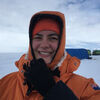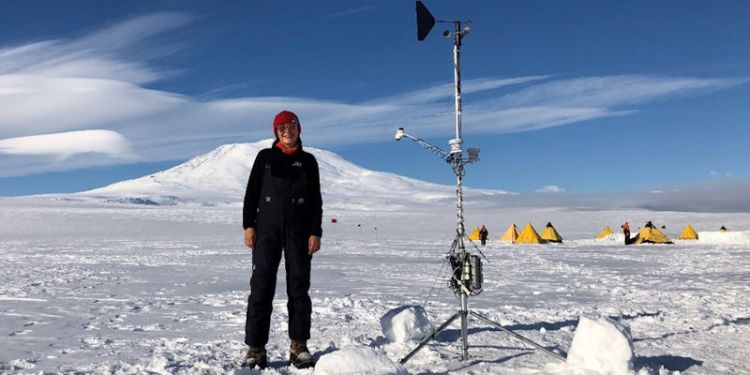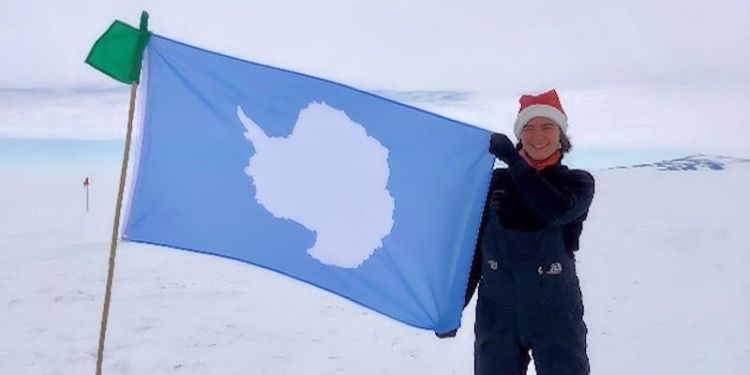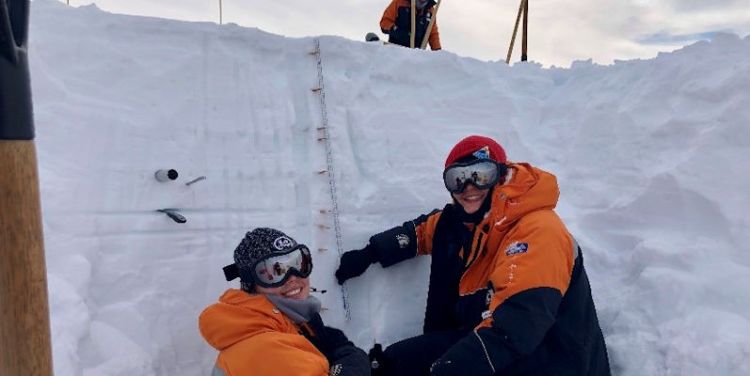
Bryony Freer
- Course: PhD in Earth Observation (SENSE CDT, based at the British Antarctic Survey)
- PhD title: Antarctic Grounding Line Migration with ICESat-2 Altimetry
- Nationality: United Kingdom
- LinkedIn: https://www.linkedin.com/in/bryony-freer-6676a3125/
Bryony Freer is a postgraduate researcher on the Centre for Satellite Data in Environmental Science (SENSE CDT). She is based jointly at the British Antarctic Survey’s Ice Dynamics and Palaeoclimate Group and the Institute for Climate and Atmospheric Science at the University of Leeds. She is co-supervised by Dr Anna Hogg from the School of Earth and Environment.
Bryony will be attending the Blue Zone of COP26, where she is co-presenting alongside postgraduate researcher Heather Selley. They highlight the importance of the Antarctic ice sheet within the global climate system, and how data collected by Earth Observation satellites have revolutionised how we understand the impact of climate change on our polar regions. Learn more about Bryony’s involvement with COP26.
Monitoring satellite data – Antarctic ice sheet
Bryony analyses satellite data over the Antarctic ice sheet to gain insight into grounding line migration. “I now get to spend every day looking at satellite data over the Antarctic ice sheet, primarily trying to understand grounding line migration,” she explained.
“This is an important field of study, because over long timescales changes in grounding line position can tell us something about the overall stability of the ice sheet. This gives insight into how it is being affected by the warming atmosphere and ocean.”
Bryony continued: “Over shorter (daily) timescales, grounding line position is affected by the rise and fall of tides, but the implication of this on wider ice sheet dynamics is not well understood. These are the key questions I hope to be able to address during the next three years of my PhD, mainly using data from NASA’s ICESat-2 satellite.”
She added: “I am very motivated by the prospect that my research could help the wider scientific community to better understand the behaviour of the Antarctic ice sheet, and ultimately it’s future response to climate change and impact on global sea level rise during my lifetime and beyond.”
My research could help the wider scientific community to better understand the behaviour of the Antarctic ice sheet, and ultimately it’s future response to climate change and impact on global sea level rise...

Bryony pictured having just set up an automatic weather station (AWS) at their field site at Windless Bight (Mt Erebus in background)
Journey to PhD study
Bryony was eager to take on a new adventure having been inspired by academics working in her field. “I remember meeting Dr Alison Cook in my first tutor meeting as an undergrad at Durham University,” said Bryony.
“She told me all about her experience working for the British Antarctic Survey, flying over the ice and mapping parts of the continent for the very first time. I was amazed that someone could have such a cool job, and it really sparked in me a passion for the polar regions.”
Bryony continued: “After I graduated, I was accepted onto a course in Antarctic Studies at the University of Canterbury in Christchurch, New Zealand. As part of this, we flew down to Scott Base and spent a week camping on the Ross Ice Shelf and learning what it is like to be a scientist in Antarctica.
“This was an incredible, life-changing experience and I knew I wanted to continue in this field; it definitely gave me the Antarctic bug. One masters in Geographic Information Science (GIS) later, I was accepted onto my PhD at the British Antarctic Survey and the University of Leeds.”
The University of Leeds offers an online MSc in Geographical Information Science, and a campus-based MSc in Geographical Information Systems. Individual modules from Geographical Information Science are also available to study as short courses.

Bryony standing with an Antarctic flag at the field site on the Ross Ice Shelf on Christmas Day, 2018
Supportive research community
“At the University of Leeds, I am part of the Institute for Climate and Atmospheric Science (ICAS), which is a vibrant research group of scientists working across a wide spectrum of climate science,” Bryony explained. “At BAS I am part of the Ice Dynamics and Palaeoclimate research group.”
She continued: “Being part of these groups has been a great opportunity to be exposed to research beyond my PhD topic, particularly through the regular online seminar series that both groups have organised since I joined. It has also meant I have been welcomed into a cohort of other PhDs students who all started at the same time as me, and we have been able to support each other on our (sometimes bumpy) rides throughout the first year of our PhDs.
“The SENSE CDT community has also been fantastic for this. Despite the fact that our 8 weeks of residential training and fieldtrips were unable to go ahead in person due to Covid, all of the directors, managers and students put a lot of effort into making sure we were still able to integrate and get to know each other, all while still learning lots about the wonderful world of Earth Observation!”
Being part of these groups has been a great opportunity to be exposed to research beyond my PhD topic, particularly through the regular online seminar series...

Bryony and colleagues pictured measuring the properties of snow layers in a snow pit at their field site
Expert supervision
Bryony explained she has “three fantastic supervisors” spread across three research institutions: Oliver Marsh at the British Antarctic Survey, Anna Hogg at the University of Leeds and Helen Fricker at the Scripps Institute of Oceanography (La Jolla, USA).
She said: “My supervisors are all very supportive, helping to guide the direction of my project over the next few years and offering encouragement and advice. Their research interests are very complementary and I am grateful to be advised by people with such expertise in both glaciology and Earth Observation.”
Bryony added: “Helen in particular was a real pioneer of laser altimetry for ice sheet research and is closely involved with the ICESat-2 science team at NASA, so it is a privilege to work with her. They are all very well connected to the international glaciology and earth observation communities, and this has helped me to expand my network despite the struggles of starting a PhD during a global pandemic.”
My supervisors are all very supportive, helping to guide the direction of my project over the next few years and offering encouragement and advice.
Join us
For more details about studying for a research degree at Leeds, visit our research degrees pages.

